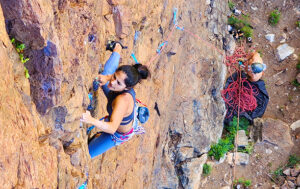Rock Climbing Safety. When embarking on a rock climbing adventure in Maui, prioritizing safety is paramount. Understanding and implementing proper safety measures can make the difference between a memorable experience and a potential mishap. In this comprehensive safety guide, we will delve into the essential tips and practices to ensure a secure rock climbing adventure in Maui.
Proper Use of Safety Equipment: One of the fundamental aspects of rock climbing safety is the proper use of safety equipment. This includes wearing a well-fitted climbing helmet, harness, and appropriate climbing shoes. Familiarize yourself with the correct way to use and adjust this equipment to ensure maximum safety during your climbs.
Thorough Risk Assessment: Before attempting any climb, conduct a thorough risk assessment of the route and climbing area. Pay attention to loose rocks, unstable footholds, and potential hazards. Evaluate weather conditions and be prepared to adjust your plans if necessary. A careful risk assessment will help you make informed decisions and mitigate potential dangers.
Climbing with a Partner: Climbing with a reliable partner is crucial for safety. Always have a climbing partner who is experienced, knowledgeable, and shares a commitment to safety. Maintain clear communication and establish a system of checks and balances to ensure each other’s well-being throughout the climb.
Proper Anchoring and Rope Management: Proper anchoring and rope management are vital aspects of rock climbing safety. Learn and practice the correct techniques for setting anchors, tying knots, and managing the rope. Regularly inspect your equipment for wear and tear, and replace any worn-out gear to maintain the highest level of safety.
Communication and Climbing Signals: Establish clear and effective communication with your climbing partner using standardized climbing signals. These signals allow for efficient and concise communication, especially in situations where verbal communication may be challenging. Understanding and utilizing climbing signals can help prevent accidents and enhance overall safety.
Fitness and Training: Maintaining good physical fitness and engaging in regular training can significantly contribute to rock climbing safety. Strengthening your core, improving flexibility, and building climbing-specific muscles can enhance your performance and reduce the risk of injuries. Incorporate strength training and conditioning exercises into your routine to prepare your body for the demands of rock climbing.
Continuous Learning and Education: Stay up to date with the latest safety techniques and industry standards by pursuing continuous learning and education. Attend workshops, join climbing courses, and seek guidance from experienced climbers. Stay informed about new safety equipment, practices, and rescue techniques to enhance your skills and knowledge.
Respect for the Environment: Practicing environmental stewardship is essential for maintaining safety while rock climbing in Maui. Respect the natural environment, avoid damaging rock formations or vegetation, and adhere to established climbing ethics. Leave no trace, carry out any waste, and strive to leave the climbing areas in the same or better condition than you found them.
Prioritizing rock climbing safety is crucial for a secure and enjoyable adventure in Maui. By following proper safety practices, using appropriate equipment, conducting thorough risk assessments, and cultivating a safety-conscious mindset, climbers can minimize risks and create lasting memories. Remember, safety should always be the foundation upon which every rock climbing endeavor is built.
If you would like more information about climbing with us, please visit our FAQ page here. If you need to see more of Maui to decide on making a trip to the island, check this out> Maui




